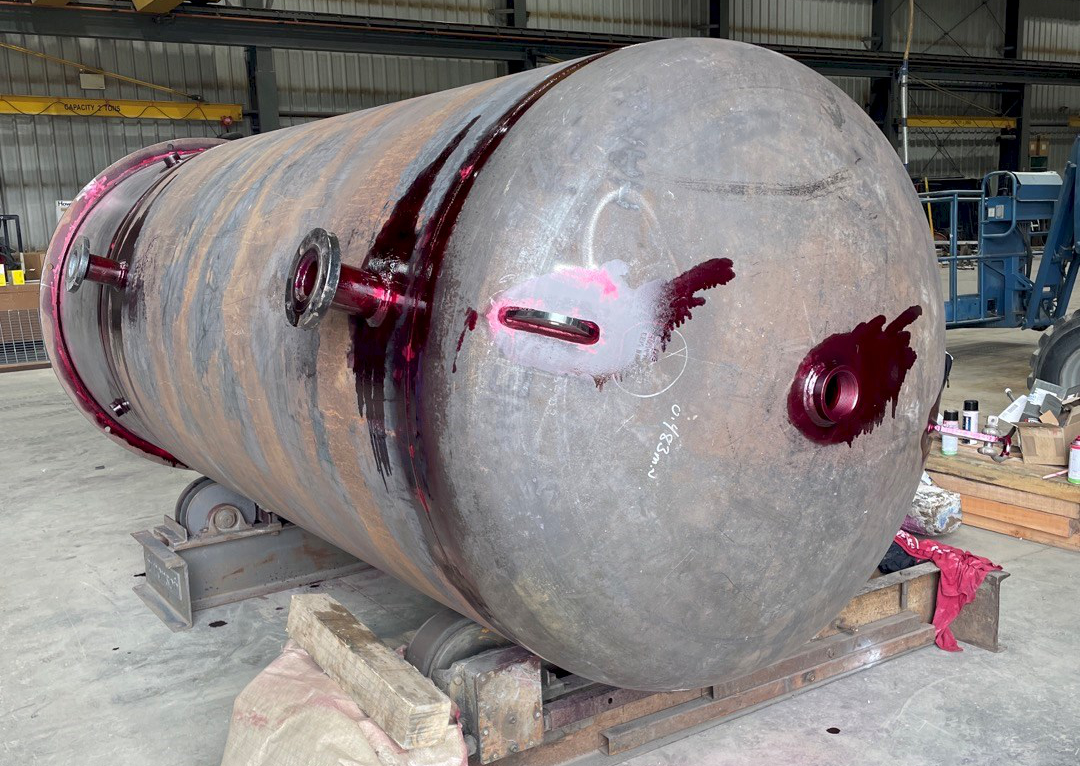A Thorough Introduction of Tank Welding Examination Requirements and Methodologies for Improved Weld Top Quality and Efficiency
The relevance of welding evaluation standards in the production of containers can not be overstated, as they serve as the backbone for making sure weld honesty and functional dependability. Numerous examination techniques, consisting of aesthetic assessments and progressed non-destructive screening approaches, are critical in recognizing potential flaws that could jeopardize efficiency.
Relevance of Welding Examination Standards

Welding inspection criteria encompass a variety of requirements, including material specifications, welding procedures, and qualifications of employees involved in the welding procedure. By applying these criteria, organizations can methodically recognize and remedy potential flaws, thereby minimizing the probability of pricey repair services or catastrophic failings. Furthermore, extensive examination practices foster a society of accountability and precision, encouraging welders to preserve high levels of craftsmanship.

Typical Welding Inspection Methods


Ultrasonic Evaluating (UT) is an additional prevalent technique, making use of high-frequency sound waves to spot interior problems that may not show up externally. This method is specifically effective for determining spaces or inclusions within the weld metal. Magnetic Particle Examining (MT) is likewise commonly utilized, especially for ferromagnetic products, as it exposes surface area and near-surface flaws through the application of magnetic areas and ferrous particles.
Furthermore, Fluid Penetrant Screening (PT) spots surface-breaking problems by using a penetrant to the weld and after that making use of a designer to extract the penetrant. Each of these methods adds to a thorough evaluation strategy, guaranteeing that welds satisfy the stringent high quality standards called for in container building and construction.
Regulatory Criteria and Compliance
Governing standards and compliance are essential components in ensuring the safety and integrity of bonded structures in container construction - Tank Welding Inspection. These standards offer to establish minimum demands for material residential or commercial properties, welding treatments, and inspection practices, therefore minimizing the risk of architectural failures and improving total performance
Trick companies, such as the American Culture of Mechanical Engineers (ASME) and the American Welding Culture (AWS), provide standards that are commonly adopted in the market. Compliance with these requirements not just ensures adherence to ideal techniques however likewise meets lawful and legal obligations, safeguarding the interests of stakeholders.
Regulative bodies often mandate adherence to particular codes, such as ASME Code Section IX for welding credentials and API 650 for welded containers. These codes lay out requirements for welding strategies, qualifications of workers, and testing techniques to confirm weld stability.
Routine go to website audits and inspections are vital to maintaining conformity, as they assist recognize deviations from established standards. Non-compliance can cause substantial charges, job hold-ups, and security threats. Hence, a robust understanding of governing criteria and a dedication to compliance my latest blog post are extremely important in achieving high-grade and resilient bonded storage tank frameworks.
Non-Destructive Testing Approaches
How can the stability of bonded frameworks be assured without creating damage? Non-destructive testing (NDT) techniques provide a durable option, allowing examiners to examine weld top quality without compromising the material - Tank Welding Inspection. Amongst the most typical NDT techniques are ultrasonic testing (UT), radiographic testing (RT), magnetic fragment screening (MT), and dye penetrant screening (PT)
Ultrasonic testing utilizes high-frequency acoustic waves to identify interior flaws and characterize material residential or commercial properties. It offers specific measurements and is specifically reliable for thick products. Radiographic testing entails passing X-rays or gamma rays through the weld, developing pictures that reveal structural issues such as cracks or gaps. This method is vital for assessing the stability of complicated welds.
Magnetic bit screening is matched for ferromagnetic products, where magnetic fields disclose surface and near-surface interruptions. Color penetrant testing uses a fluid color to highlight surface-breaking problems, making it an effective technique for non-porous materials.
Each of these NDT methods has unique advantages, enabling for comprehensive analyses customized to particular products and welding procedures. By executing these strategies, industries can ensure the integrity and security of bonded frameworks, eventually enhancing general performance.
Enhancing Weld Top Quality With Evaluation
Effective examination plays a crucial role in improving weld high quality, offering as a vital checkpoint in the fabrication process. By determining possible defects early, evaluations reduce the danger of compromised structural integrity and guarantee compliance with market criteria. Employing a combination of visual evaluations, non-destructive testing (NDT) techniques, and mechanical evaluations, inspectors can spot problems such as porosity, splits, and incomplete combination.
Implementing a robust assessment procedure not only enhances the overall top quality of welds however also fosters a society of accountability among welders and fabricators. Normal training and qualification of examination employees make sure that they are furnished with the essential abilities to acknowledge and attend to possible problems properly. This proactive technique decreases rework and associated expenses, inevitably adding to predict efficiency.
Additionally, thorough documents of assessment searchings for provides valuable understandings right into recurring concerns, facilitating continual enhancement in welding methods. By leveraging advanced innovations, such as automated ultrasonic testing or electronic radiography, weld high quality can be enhanced via a lot more specific evaluations. To conclude, an extensive examination process is crucial in accomplishing top quality welds, making certain safety, dependability, and durability in container construction.
Verdict
In have a peek at this site conclusion, the application of strenuous container welding examination criteria and methodologies is essential for making sure weld integrity and efficiency. By utilizing a combination of visual assessments, non-destructive screening techniques, and adherence to governing requirements, companies can effectively recognize and mitigate prospective defects. Promoting a culture of responsibility amongst welders further enhances the high quality of welding processes. Eventually, these methods add to lowered architectural failings, reduced repair work costs, and boosted functional performance within the sector.